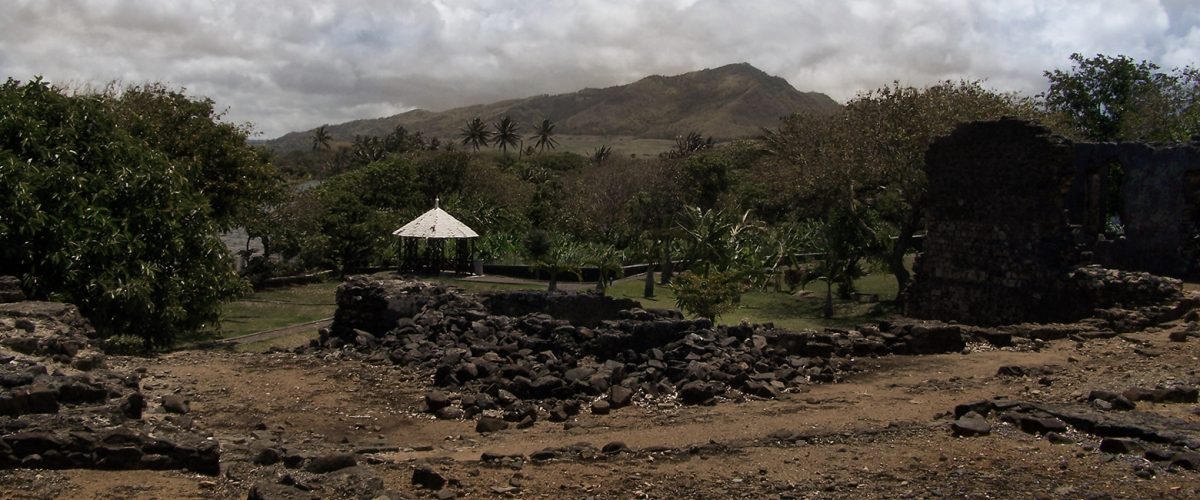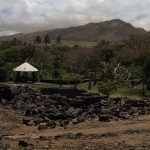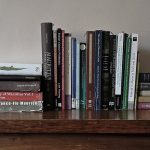It could be said that The Magic of Tiéga was written, if not in response to or to correct, then at least to add some depth to people’s general perception of Mauritius.
To most this name brings to mind an island paradise, situated somewhere in the Indian Ocean or maybe even the Caribbean Sea; the kind of place one takes one’s family for the holiday of a lifetime. Palm trees are imagined, white sandy beaches, a sea blue and clear and warm, and of course there’s rum, and let us not forget the Dodo. This is a destination for the exclusive set, not those used to jaunts over to Málaga or Magaluf or cheap European city breaks. Although things have changed it still very much holds this prestige: ‘Wasn’t Mauritius where so-and-so celebrity went on their hols, or this or that member of royalty?’ you might hear.
As for its people they’re black or brown aren’t they? Indian or African looking, no mixed, no all of the above. Are they indigenous? Well that one gets a real shrug, for unless you have some connection to the island or you’re a specialist scholar, why would you know? If you’re French maybe you could answer a few more of these questions, but in Britain you’d pretty much draw a blank.
So how does this set Mauritius apart from any other ex-European sugar colony? How has it managed to retain its mystique?
Now, let’s be honest, it wasn’t school that taught us about West Indian culture but its people. It was through the music and stories of the Windrush generation, and their descendants, that we learnt their history. These were not the tales of great European conquest long implanted in our psyche. They were not accounts portraying these islands as cradles of capital necessary to stimulate the industrial revolution, essential evils required for European economic expansion. They were not the stories of the so called civilizers, but of the people who survived and thrived despite having to bear the burden of other’s progress.
However, this is not Mauritius. Despite having added to many an English and Frenchman’s fortune, it was never essential for the progress of their nations, nor in later years was it such a stain on their collective consciences. Mauritians arrived in Britain later and in smaller numbers, their influence not stretching far beyond their own social circles. The connections are there but like the island, itself, they are more distant and harder to see.
Mauritius is situated in the south west Indian Ocean, 560 miles east of Madagascar. It is approximately 40 miles in length and 28 miles wide. Despite appearing on European maps as early as 1502, it did not see its first settlers until the arrival of the Dutch in 1638. After the Dutch, the island fell into the hands of the French and then the British. It grew from little more than a strategic outpost in seventeenth century, to a thriving sugar based economy in the nineteenth.
The island’s inhabitants are a reflection of this history, their forbears introduced according to the needs and objectives of each successive colonial regime. These largely agricultural economies were first fuelled by the labour of slaves from Madagascar and the East African mainland, then indentured workers from the Indian subcontinent. The descendants of these peoples make up the island’s two major ethnic groups: Creoles and Indo-Mauritians. Indo-Mauritians, the larger of the two demographics, constitute around two-thirds of the population, while Creoles compose just over one quarter. There are also smaller ethnic enclaves of Sino and Franco-Mauritians.
What I hoped to achieve in writing The Magic of Tiéga was to provide at least a small window into the island’s history, to offer a glimpse of a world beyond palm trees and beaches and something less ephemeral than two weeks of sun. Yes it is fiction, myth and fairy tale, but yet it is steeped in the reality and experience of its setting, grounded in historical sources as well as imagination.
My story is set in the wake of great change, the apprenticeship system1 had not long ended and the bite of slavery, itself, was still fresh in minds the island’s Creole population. It was a time that saw the ex-slaves abandon the fields of their former masters. The Creole persona was transformed in the minds of the ruling population, from assiduous and astute to workshy and duplicitous, wretches content to exist on the bare essentials of life. Plantation owners were left perplexed when their former wards took their freedom elsewhere and took umbrage at their former wards’ disloyalty.
There were, of course, those who remained with their former masters and those who returned to work casual jobs when their pockets ran dry, but most sought new opportunities. They became market gardeners, fishermen, hawkers, musicians, blacksmiths, carpenters and loafers. Some settled, some took to the road and embraced the peripatetic life, travelling to where their work took them; some just took to the road, letting destiny be their guide. The past was not forgotten, neither by master nor peon, but it was a time when myriad bright futures seemed possible, even if many of these never came to be. The time of endless toil was over and people could shape themselves into something new, or simply become who they had always been.
The Magic of Tiéga is a story of two lives, each on opposing sides of this process. Lives that despite their differences are deeply intertwined, their connection spanning across generations.



